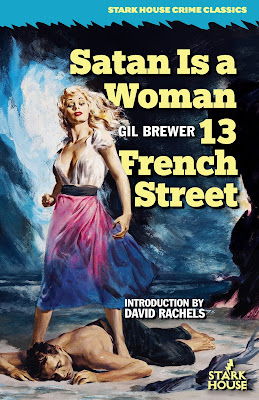Frank Lambirth (1928-2007) earned his M.A. at the University of Kentucky, then began a career as a high school teacher while also lecturing at UC Davis. Lambirth directed numerous melodramas performed by students and faculty, and in the mid-1980s, he formed the successful Puget Sound Writers Guild, a nonprofit that offered guidance, teaching and feedback for creative writers. While publishing at least two novels under his own name, Lambirth created various pseudonyms, developed drafts and novels using those names, and then would sell the pseudonym. He considered it saleable property. While teaching, he once taught a course in the supernatural. He would spend hours with his students sitting in supposedly haunted places conducting field studies. Perhaps his keen interest in the supernatural propelled his writing career. The only two novels I've located with Lambirth's name is Behind the Door (1988) and Now I Lay Me Down to Sleep (1989), both of which are horror. Owning both books, I decided to try Lambirth's writing with the latter novel, originally published as a paperback by Popular Library with cover-art by Mark and Stephanie Gerber.
In the book's opening pages, readers are introduced to protagonist Linc Wilhite. Through a hazy presentation, Wilhite's backstory is saturated with various memories of a love lost, a regretful childhood, an estrangement from his father, and a murky hospital stay. The author only fills in these blank spaces in the narrative's second-half, with one major detail coming near the book's finale. At 231 pages, it's a long road to get there. But, the narrative's central story is Wilhite's experiences in a new job serving as a caretaker in a rural area known as Stone Warrior Island.
Wilhite accepts a job as a lone caretaker for two vacation houses off the coast of the Pacific Northwest. The island is submerged in creepy folklore about Satanism, murder, and a spectral bird, all of which are insanely broadcast by the island's former caretaker, a deranged man who warns Wilhite that Satan lives on the island. Brushing off these ramblings, Wilhite takes the job and is flown to the destination to prepare the houses for the owners' upcoming vacations and a family of renters from New York.
During a few days of isolation, Wilhite – and the reader – explores the houses, the surrounding forest, and the various locks and keys required to enter certain areas. The conclusion is that this place is truly in the middle of nowhere. But, Wilhite receives the New York family of visitors soon and the customary meet and greet ensues. The father is a stressed businessman hounded by his wife, two daughters, and a son. After a warm welcome, things turn sour when Wilhite is invited to join the family for dinner. This altercation, which I won't spoil here, leads Wilhite to question the family's intentions.
Lambirth's ultra-creepy factor settles in at the halfway point. Through the windows, Wilhite notices that the family is camped in the den, completely stationary, watching hours upon hours of television - on their vacation to the great outdoors. After two solid days of television, Wilhite sneaks a closer look and is horrified at his discovery. Something murderous is stalking Stone Warrior Island.
Do you recall all of those great slasher films of the late 70s and early 80s? For example, when Laurie Strode ventures across the street near the end of John Carpenter's original Halloween? The house is quiet and foreboding, then she hears a creaking as if someone is moving upstairs. You and I both know that Myers is upstairs in the dark. This book works at that atmospheric level. Wilhite, who is basically the only voice the reader hears for most of the book, is left in isolation with a presence that exists off the page. The signs are all there – items shifted around, doors unlocked, footsteps in the house, mysterious fires – but it's all a mystery on who or what it is. Additionally, when a young girl appears, the book reminded me of that great 1970s horror film Let's Scare Jessica to Death. But, it isn't all great.
As good as Lambirth is with creating spooky, unnerving atmospheric horror, he isn't a fabulous storyteller. He shines with descriptive details, describing each scene with vibrant colors and calculating each footfall to the timing of the character's heartbeat. The author is mesmerizing when it comes to painting a room. Yet, dialogue and the character's recollections of the past were nothing short of awful. Thankfully, most of the book is just the reader in the headspace of Wilhite. But, when other characters interact, the writing is amateurish and wonky. It's really a mismatch of sheer greatness and pompous excess.
The verdict? Now I Lay Me Down to Sleep was a fun reading experience. It was haunting, cerebral, descriptive, atmospheric, and most importantly, it stayed with me long after the last page was read. Despite the clunky writing, the novel served its purpose quite well. It just isn't an absolute gem. I'm not dismissing Lambirth and plan on reading his other horror novel soon.
Buy a copy of this book HERE




















